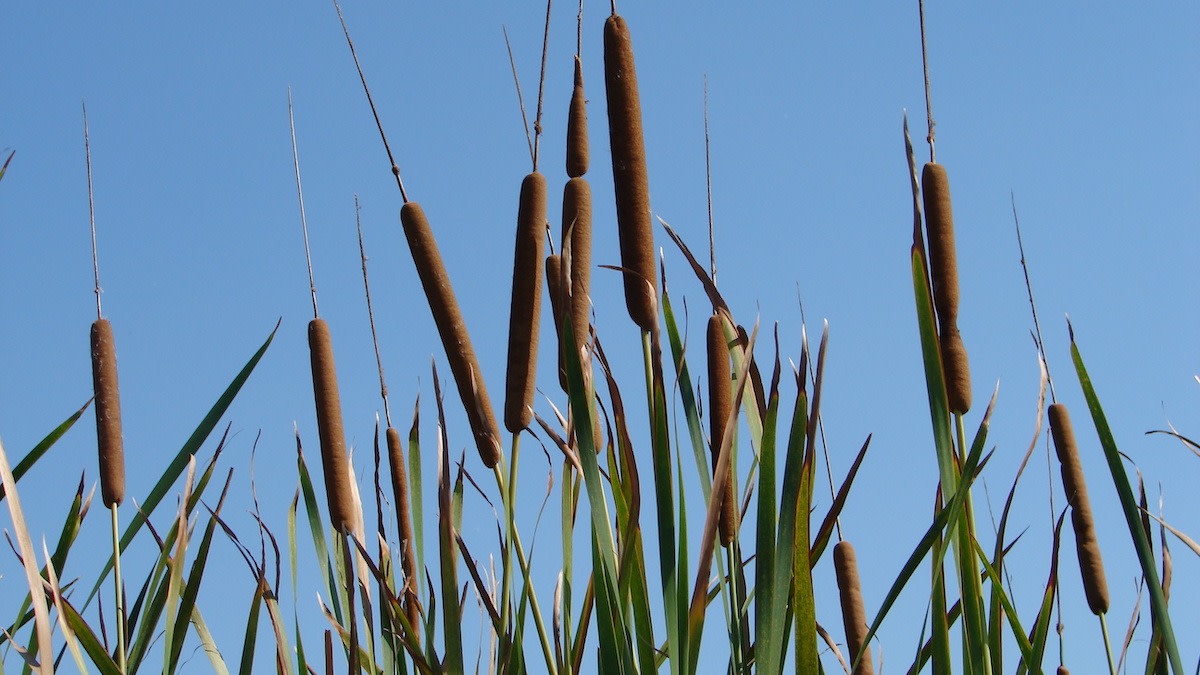Can You Eat Cattails? 4 Ways to Prepare Cattails
Written by MasterClass
Last updated: Apr 7, 2022 • 3 min read
Cattails are a prolific survival food with many culinary applications and practical uses. Learn more about cattails and how to prepare them to be eaten.
Learn From the Best
What Are Cattails?
Common cattails (Typha latifolia), also known as bulrushes, are a wetland plant native to North America. You can find them growing in the shallow waters along the banks of swamps, ponds, lakes, rivers, and streams. Cattail stalks grow to be between five and ten feet tall. They are easily distinguished by their brown, oblong, flowering head. Native Americans have cultivated these wild plants for centuries for their many different uses, including cooking, tinder, basket weaving, and water filtration.
Can You Eat Cattails?
There are many edible parts of the cattail plant, including the roots, pollen, shoots, stalks, flowers, and seed heads. Cattail leaves can be eaten but are more commonly dried and used to make baskets. In addition to using cattails as a fuel source and weaving material, Native Americans have cultivated cattails for cooking. This wild food source is incredibly resilient and a source of vitamins and minerals. Eating cattails provides a substantial dose of vitamin C, phosphorus, and potassium. Certain parts of the plant are best eaten at different times of the year. For example, the young shoots, flowers, and pollen are best enjoyed in the spring, whereas the stalks and roots are best in the fall.
4 Ways to Eat Cattails
When harvesting these wild edible plants, be sure that they are grown in a clean water source. Here are some of the most common cattail recipes based on different parts of the plant.
- 1. Cattail pollen: You can collect the yellow pollen from male cattail flowers to make cattail flour. Sift the flour and store it in a cool dry place, then use it in tandem with wheat flour to bake breads and cakes.
- 2. Cattail roots: Cattail roots, aka rhizomes, are best eaten in the fall or winter. To prepare cattail roots, clean them with cool water, then trim off the small offshoots of the main rhizome. Cattail roots can be grilled, baked, or boiled. After you’ve fully cooked cattail roots, you can eat them like the outer leaves of an artichoke—pull the flesh away from the fibrous root with your teeth.
- 3. Cattail shoots: Harvest the young shoots of cattails in the spring. Peel away the outer leaves to reveal a tender, white shoot. You can sauté or stir fry the shoots. They have a flavor akin to cucumbers.
- 4. Cattail flowers: Harvest female flowers while they’re still green, before pollination. They can be grilled or boiled and eaten with butter and salt, just like corn on the cob. Once they turn their characteristic brown color, they are no longer good for eating. Attempting to eat pollinated cattail flowers will leave you with a mouth full of fluff.
Are Cattails Poisonous?
Cattails are an incredible survival food, boasting a wide array of culinary and practical uses. They are not poisonous, but that doesn’t mean you can throw all caution to the wind when selecting cattails. Two varieties of iris plants look similar to young cattail plants but are, in fact, toxic when ingested. When searching for cattails in the wild, look for last year’s growth to ensure what you’ve happened upon is indeed cattails and not a toxic look-alike.
Furthermore, cattails filter pollutants out of the water. When harvesting cattails, make sure they’re growing in a clean water source free from pollution. Otherwise, those pollutants could transfer to you and make you sick.
Preparing for Wilderness Expeditions
Certain outdoor activities carry an elevated risk of serious injury. Wilderness scenarios require extensive survival gear, including but not limited to food, water, maps, protective clothing, and first aid, along with mental and physical fortitude. This article is for educational and informational purposes and is not a substitute for hard skills and expertise.
Ready to Explore More of the Great Outdoors?
Prepare for any outdoor journey by grabbing a MasterClass Annual Membership and committing Jessie Krebs’s wilderness survival course to memory. As a former United States Air Force Survival, Evasion, Resistance, and Escape instructor, Jessie can teach you everything you need to know about packing for a trip (neon is the new black), purifying water, foraging (crickets: the other white meat), starting a fire, and signaling for help (forget SOS).
